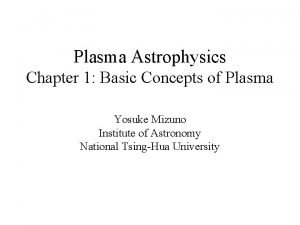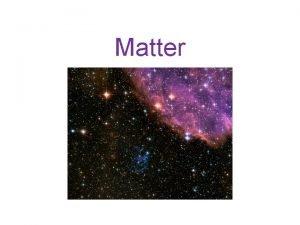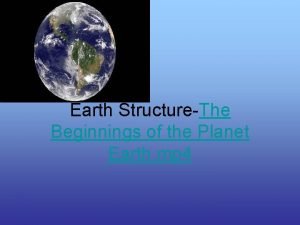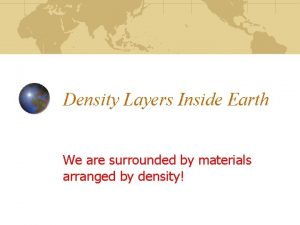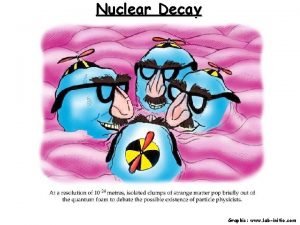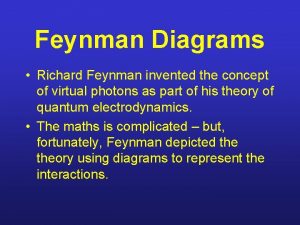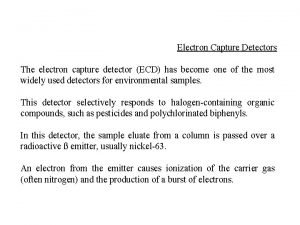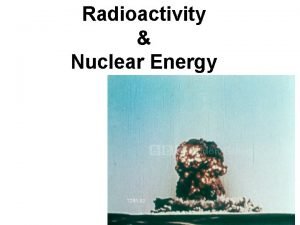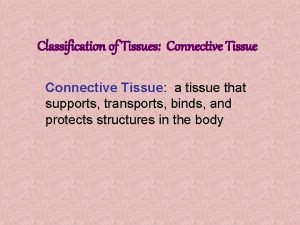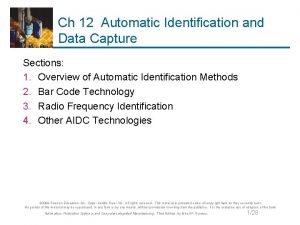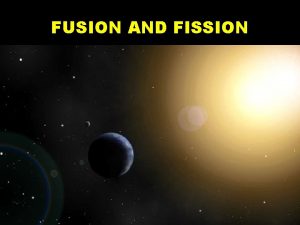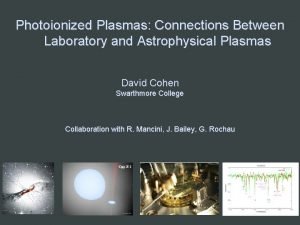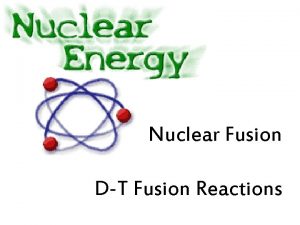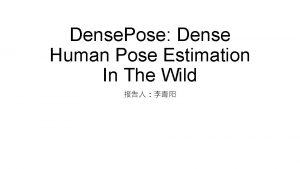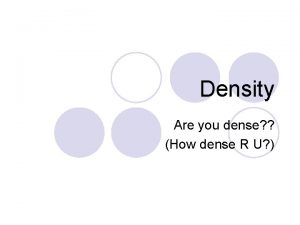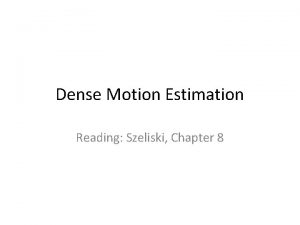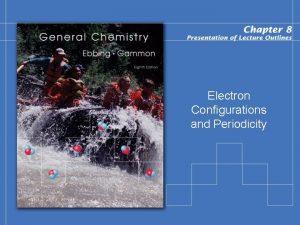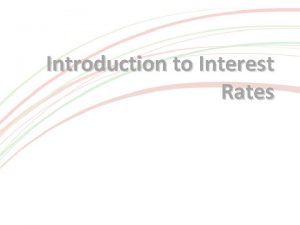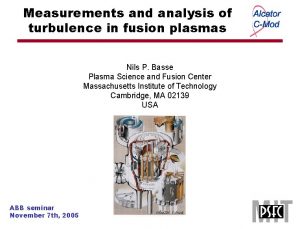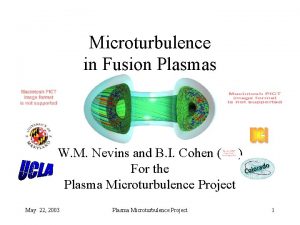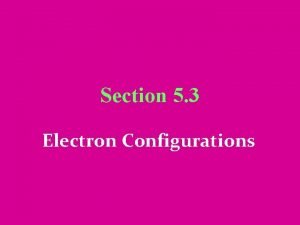Fusion and electron capture rates in dense plasmas




















- Slides: 20

Fusion and electron capture rates in dense plasmas; have the wheels come off theory ? ? ? or Some thoughts on the infrastructure, when the plasma coupling is not weak. Ray Sawyer UCSB

Example #1 : Nuclear fusion rates 12 C Q=2 Me. V + 12 C 23 Na + p with at T=5 x 108 K , r= 5 x 109 g c-3 e. g. in bursts from accreting neutron stars The effect of the plasma corrections, in the standard approach, is a factor of 107 (Gasques et al 2005) “Standard” begins with The rest of “standard” is how one computes K

My problem is that: Is not really correct in the r , T domain of the example. So am I saying that there is a calculation that might give a factor of 107 in a quantity that we need? ? but where we have no idea whatever of how to do the calculation? ?

My problem is that: is nowhere nearly correct, in the r , T domain of the example. So am I saying that there is a calculation that might give a factor of 107 in a quantity that we need? ? but where we have no idea whatever of how to do the calculation? ? er….

My problem is that: is nowhere nearly correct, in the r , T domain of the example. So am I saying that there is a calculation that might give a factor of 107 in a quantity that we need? ? but where we have no idea whatever of how to do the calculation? ? It’s not quite that bad, maybe

• Q: How much uncertainty in fusion rates can we tolerate? ? • A: In many contexts quite a lot ; perhaps a factor of 10 ? ? • Fusion rates go as such a high power of T that the multiplying coefficient usually doesn’t matter much. • But In any given range of energy, a big energy dependent factor can change the effective exponent.

Example #2 : Electron capture Effects of plasma induced ionic energy shifts • In [7], a comprehensive calculation of the infall e-capture in type II SN, these energy shifts bring about a 25% rate reduction for r=1010 g c-3 , T=. 75 Me. V • Factor of 2 reduction when r=1012 g c-3 , T=1. 5 Me. V I find this to be a spurious effect. Does this matter?

Fusion Two very different regimes: 1. Non-degenerate electrons. Weakly coupled plasma in solar core. • Salpeter (1951) calculated correlator, K 1, 2 (0) corrected for screening ( effects of a few % , for, e. g. , p+7 Be • 8 B+g ) All issues completely settled (in spite of a lot of theoretical noise. ) 2. Highly degenerate electrons. Strongly coupled plasma. G = P. E. /K. E > 1 • A lot of work has gone into calculating the classical correlator for this case. • Results: Probably semi-OK in some domains--come back to this. But--

Trouble ahead For the case in which Q (energy release) is not >> Gamow Energy* Then *Gamow energy is the energy at which the product of a penetration factor and a Boltzmann distribution function maximizes. In solar reactions it is of order 10 k. BT for some reactions. In more extreme environments It can be orders of magnitude greater than k. BT.

We start over: Process: Nuc 1+Nuc 2 -> Nuc 3+Nuc 4 where (for pedagogical reasons only) , #2 and #4 have infinite mass and are located at r=0 • Environment: N ions with coords. R 1, R 2 ……. . RN • Electrons: so degenerate as to provide only a uniform neutralizing background. Rate: b=1/T RFS: Phys. Rev. Lett. 104, 191103 (2010) L. S. Brown and RFS: Rev. Mod. Phys. 69, 411 (1997) Here H contains KE and Coulomb interactions of all particles in the brew. The coupling g is for a point nuclear interaction describing the actual fusion— ---the equivalent of saying that the energy dependence of lab cross-section (times v) is entirely from Coulomb.

Process: N 1+N 2 -> N 3+N 4 Environment: N ions with coords. R 1, R 2 ……. . RN Electrons: so degenerate as to provide only a uniform neutralizing background. Rate: If we cross out this t and replace this H with H 0 (no interaction between plasma and fusion products) Then we arrive back exactly at the standard theory And it appears to be OK when Q>>EGamow

Digression—what exactly is the “standard” theory? Begin with (again) • Calculate the classical correlator K 1, 2 down to some small r • Define an effective potential Veff by Veff(r) = T log [ Keff (r) ] • Calculate the tunneling to r=0 as though there existed only the two fusing nuclei H. Dewitt and others call this the “basically classical” approach. Is it really justified even if one accepts the ansatz ? ? There is pretty much only one paper in the literature that gives insight…. .

Militzer and Pollock 2005 (using techniques of Ceperely) : where ns is maybe 100 and N =54 • Now each factor is effectively at a high temperature ns T. Then we can make a lowest order perturbation expansion of the link. • But the integration manifold is huge— 3 (N+2) ns dimensional • Finally—can compare with “basically classical”. Results more or less agree in some regions—not in others

Good news and bad news here: • Good news: somebody finally did a real calculation • Bad news: in a narrow corner of parameter space • ? ? news: Proponents of “basically classical” claim these authors’ results support their traditional approach. (Though this wasn’t totally clear to the original authors or to me. ) • Worse news: no one will go near that calculation again. • Terrible news: In any case, we are comparing calculations of the wrong quantity • Not even news: To try to make progress I attempt an expansion in the parameter Q-1.

Note: in the correct expression As is, direct numerical computation is impossible because of oscillations. But In a perturbative approximation this has a factor t-1/2 Then in these factors we can distort the t integration contour to the two sides of the imaginary axis and have exponential decrease for increasing t. When we approximate final factor as <0, PL |e-i. Ht |0, PL’ > = d (PL –PL’) <0, PL |e-i. Ht |0, PL > Get corrections of order 50% in prototype 12 C +12 C case in which G=12

Electron capture e- +A n +B Rate: GV 2 or GA 2 and nuclear M. E. 2 here where And Ha is Hamiltonian for nucleus A plus plasma, including electron. Hb likewise for nucleus B

• Transform to interaction picture. • Turn the perturbation crank • Just to order Salpeter (e 3) Get Debye—of order e where f(E) is the Fermi distribution f(E)= ( 1+exp[ (-me+t) E ] )-1 • No correction to Q for energy shift in plasma DEA – DEB !! (even though we can easily calculate such a difference to order Salpeter) • In the degenerate limit, f 2(E) =f(E), so no correction at all

Resonance-enhanced nuclear fusion rates • --another case in which plasma induced ionic energy shifts are invoked; in this case a “shift in the resonance energy” • Lamb and Fushiki (1987) –application to triple a in dense systems (not in red giants) • Cooper, Steiner, and Brown (2009)- application to superbursts , in the case that there is a 1. 5 Me. V resonant state in 12 C+12 C fusion I believe that the energy shift effect for the latter case as implemented in Itoh et al (2003), or Cussons et al (2002) is incorrect This can make orders of magnitude of difference !

There are three appendices to this talk, which I will not show here, but will be happy to show to anyone, any time. 1. Derivation of the basic rate expression. 2. Perturbative graphs, and where they enter, a. in support of some of the assertions made earlier b. in explanation of the literature claiming new plasma effects that matter even in the weakly coupled plasma. There is a close relation between the errors in concept and formalism found in this literature and some of those that we have discussed above. 3. Itoh’s corrections to resonance-enhanced fusion, which I find make difference of a factor that runs from 10 -4 at one end of a region of interest to 102 at the other. (all for 12 C + 12 C fusion at density r 10 =. 5, a region of T in the vicinity of 5 x 108 , and assuming a resonance energy of 1. 5 Me. V.

Conclusions This is a difficult subject area. Needs : • manpower (person-power ? ) • fresh faces • encouragement • $ support Above all it needs a milieu in which problems can be studied without undue regard to immediate impact on this or that piece of recent or anticipated observational data.
 Mean free path formula
Mean free path formula What are plasmas
What are plasmas Crust outer core inner core mantle
Crust outer core inner core mantle The layers of earth from most dense to least dense
The layers of earth from most dense to least dense Earth's layers most dense to least dense
Earth's layers most dense to least dense Unit rate vocabulary
Unit rate vocabulary Proportions guided notes
Proportions guided notes Ratios rates and unit rates
Ratios rates and unit rates Ratios rates and unit rates
Ratios rates and unit rates Electron capture symbol
Electron capture symbol Feynman diagram electron capture
Feynman diagram electron capture Electron capture detector
Electron capture detector Electron capture example
Electron capture example Very dense warm and wet forests
Very dense warm and wet forests Wet
Wet Connective definition anatomy
Connective definition anatomy Connective tissue
Connective tissue Kingdom protista
Kingdom protista Automatic identification and data capture pdf
Automatic identification and data capture pdf Business model create deliver capture value
Business model create deliver capture value Capture create and share
Capture create and share
